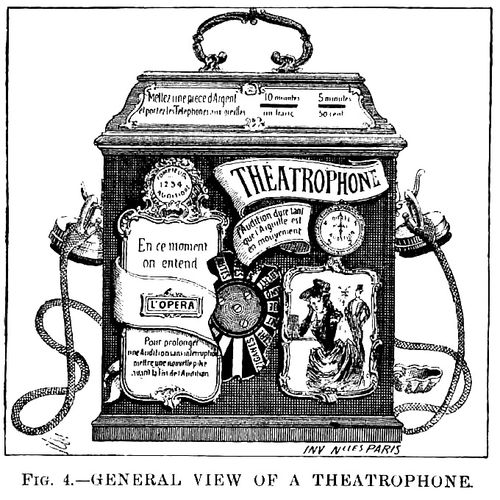JF Ptak Science Books Quick Post
There is a veyr interesting period in the history of thought transmission where answers were coming together--they were interesting technological answers in the steps towards mass broadcast that were fruitful for the time and capacity but which were ultimately overtaken by other events. Such is the case in this case of early "radio" transmission, with the popular introduction of a device called the "Theatrophone", explained in this article in the Scientific American for July 2, 1892. The device was a telephone-like device that allowed people to listen to live performances of opera/symphony remotely--for a modest fee of one franc for ten minutes or half a franc for five minutes. There was also a dial to select the sort of entertainment you wanted if there was a selection available, which you can see in the semi-cutaway in the image above (with "opera" being the selection). I feel that the first exposure of this device to a general audience in 1892 would have been an astonishing next-step in the development of a new medium, like being exposed to the internet while only having known television.
The Theatrophone makes its big appearance in La Nature and Scientific American at a time of dynamic change in the development of radio. Elements of radio were established by Faraday (1831), Henry (1842), Maxwell (1864), Houston (1871), and Hertz (1888)--the experience in the 1890's was different, with wireless transmission nearly established, and with Elihu Thompson, Wm Crookes writing in 1892 about the possibility of this capacity in "Hertzian Waves" and with Tesla, FitzGerald, Lodge, Dolbear and other giant names saying in 1893 that sound transmission would soon be accomplished. Marconi's patent would be issued four years later in 1896, and by the end of the century and into 1902 there are reports of trans-Atlantic transmissions by Marconi and Fessenden. But back in 1892, the Theatrophone offered a glimpse into the near-future, allowing people to listen to live entertainment, remotely.
- The Scientific American article is reproduced in full at the Radio History website, here: http://earlyradiohistory.us/1892the.htm



Comments